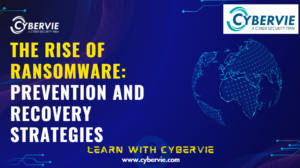Introduction
Security information and event management (SIEM) technology supports threat detection, compliance and security incident management through the collection and analysis (both near real time and historical) of security events, as well as a wide variety of other event and contextual data sources. The core capabilities are a broad scope of log event collection and management, the ability to analyze log events and other data across disparate sources, and operational capabilities (such as incident management, dashboards and reporting).
SIEM tools are an important part of the data security ecosystem: they aggregate data from multiple systems and analyze that data to catch abnormal behavior or potential cyberattacks. SIEM tools provide a central place to collect events and alerts – but can be expensive, resource intensive, and customers report that it is often difficult to resolve problems with SIEM data.
How does SIEM work?
SIEM provides two primary capabilities to an Incident Response team:
- Reporting and forensics about security incidents
- Alerts based on analytics that match a certain rule set, indicating a security issue
At its core, SIEM is a data aggregator, search, and reporting system. SIEM gathers immense amounts of data from your entire networked environment, consolidates and makes that data human accessible. With the data categorized and laid out at your fingertips, you can research data security breaches with as much detail as needed.
Why is SIEM important?
SIEM combines two functions: security information management and security event management. This combination provides real-time security monitoring, allowing teams to track and analyze events and maintain security data logs for auditing and compliance purposes.
SIEM offers a well-rounded security solution to help organizations identify potential and real security vulnerabilities and threats before they disrupt operations or cause lasting damage to their business reputation. SIEM makes behavioral anomalies visible to security teams, enhancing the monitoring process with AI to automate incident detection and response processes. It has replaced many manual tasks, becoming a ubiquitous tool for any security operation center (SOC).
In addition to providing log management capabilities, SIEM has evolved to offer various functions for managing security and compliance. These include user and entity behavior analytics (UEBA) and other AI-powered capabilities. SIEM provides a highly efficient system for orchestrating security data and managing fast-evolving threats, reporting requirements, and regulatory compliance.
SIEM Features and Compatibilities
- Alerting
Analyzes events and helps escalate alerts to notify security staff of immediate issues, either by email, other types of messaging, or via security dashboards. - Dashboards and Visualizations
Creates visualizations to allow staff to review event data, see patterns, and identify activity that does not conform to standard processes or event flows. - Compliance
Automates the gathering of compliance data, producing reports that adapt to security, governance and auditing processes for standards like HIPAA, PCI/DSS, HITECH, SOX, and GDPR. - Retention
Stores long-term historical data to enable analysis, tracking, and reporting for compliance requirements. Especially important in forensic investigations, which can occur long after the fact. - Threat Hunting
Allows security staff to run queries from multiple sources viaSIEM data, filter and pivot the data, and proactively uncover threats or vulnerabilities. - Incident Response
Provides case management, collaboration, and knowledge sharing around security incidents, allowing security teams to quickly synchronize on the essential data, communicate, and respond to a threat. - SOC Automation
Integrates with other security solutions using APIs, and lets security staff define automated playbooks and workflows that should be executed in response to specific incidents.
Top SIEM Tools
These are some of the top players in the SIEM space:
Splunk
Splunk is a full on-prem SIEM solution that Gartner rates as a leader in the space. Splunk supports security monitoring and can provide advanced threat detection capabilities.
Varonis integrates with Splunk through the Varonis DatAlert App for Splunk.
IBM QRadar
QRadar is another popular SIEM that you can deploy as a hardware appliance, a virtual appliance, or a software appliance, depending on your organization’s needs and capacity.
QRadar can integrate with Varonis to add Advanced Threat Detection capabilities. Look for the Varonis App for QRadar
LogRhythm
LogRhythm is a good SIEM for smaller organizations. You can integrate LogRhythm with Varonis to get threat detection and response capabilities.
Conclusion
Companies usually will express two primary concerns regarding the ability of their existing technologies to handle cybersecurity threats now and in the future. First, SIEM solutions don’t usually support very large workloads (i.e., big data) and struggle to handle the large numbers of alerts and contextual data required. Second, most tools that detect, investigate, and respond to threats are unintuitive.
These concerns are driving new solutions to address the needs of hybrid models, ever-growing data, digital transformations, and cloud-based environments. Modern practices often expose organizations to new threats, with attack surfaces growing alongside expanding systems. There is demand for new disruptive technology.







